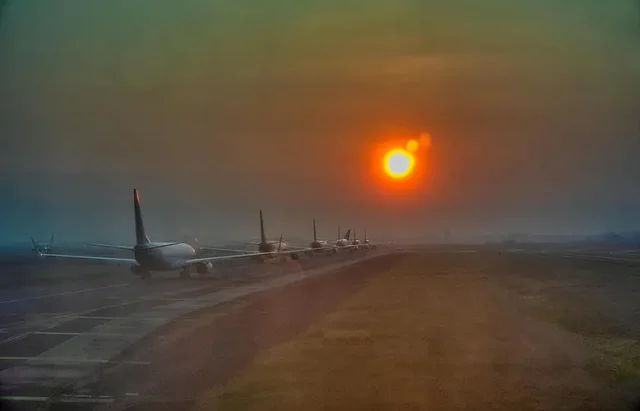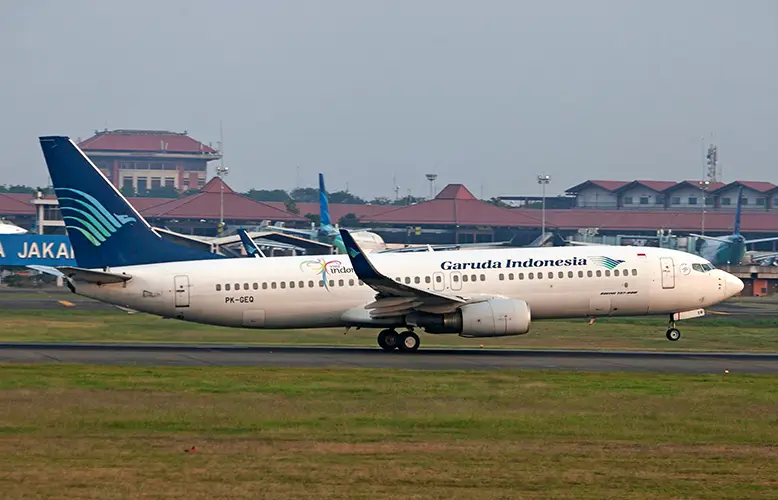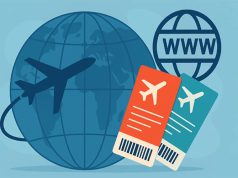
With international arrivals on the rise and Indonesia now standing alongside top global tourism destinations like the U.S. and Italy, the country is focusing on air connectivity to drive further growth. This commitment is especially clear in the growing number of new routes and increased flight capacity, which are transforming the way travelers reach and move around Indonesia.
From Adelaide to Denpasar, and Cheongju to Labuan Bajo, the skies above Indonesia are busier than ever, connecting the archipelago to the world like never before.
New Adelaide – Bali Route
Indonesia AirAsia launched direct flights between Adelaide and Denpasar. The service runs four times a week, and around 74,000 extra seats per year. It’s a welcome addition for South Australian travelers and a timely boost for tourism in Bali.
The service not only simplifies direct leisure travel but also enhances Fly-Thru access to 130+ destinations, making Bali a viable hub, not just a destination.
According to the news, the new connection is already showing an 18% rise in outbound bookings from South Australia, an early sign that demand for streamlined international leisure routes is growing faster than expected.
TUI, Jetstar, and Sichuan: Routes in the Pipeline

Several airlines are looking at adding more direct flights to Bali and other parts of Indonesia. TUI Airways is weighing a potential South Korea–Bali route to serve rising demand from East Asia. Jetstar is also planning a new connection from Newcastle, Australia, which would give that region a more convenient way to reach Indonesia.
Sichuan Airlines’ planned direct flights to Bali would tap into China’s pent-up outbound travel demand, where Bali ranks in the top 3 destinations for Chinese tourists in 2025, according to Travel and Tour World.
These potential routes underscore a wider trend: smaller and secondary cities are being connected directly to Indonesia’s tourism hubs, bypassing larger, congested transit airports.
Cheongju – Bali: T’way Air Connects New Dots
South Korea’s T’way Air is set to launch direct flights between Cheongju and Denpasar in September 2025. The service will run twice a week, using Boeing 737 MAX 8 aircraft. This isn’t just another tourism route – it’s part of a broader push to connect mid-sized East Asian cities with Southeast Asia’s top travel spots.
Why Air Connectivity Matters for Indonesia’s Economic Strategy
New flight routes aren’t just helpful for tourists – they play a bigger role in how Indonesia plans to grow its economy. With tourism expected to make up about 5.5% of the country’s GDP in 2025 (WTTC), better access means more jobs in places like airports, hotels, transport, and small local businesses.
Estimates suggest that each new international flight can create between 7,000 and 10,000 jobs in its first year. That includes everything from pilots and baggage handlers to caterers and local food producers.
This impact is especially noticeable in special economic zones like Labuan Bajo, Mandalika, and Likupang. These areas have struggled to attract steady tourism because they’re harder to reach. As airlines start adding routes beyond Bali, it becomes more realistic and more worthwhile to invest in these lesser-known destinations.
Travelers Win Big with New Routes
Direct flights are a game-changer. Cutting out layovers not only saves time, but it can also make the trip a lot more affordable. That matters when travelers are deciding between Indonesia and places like Thailand or Vietnam. The Cheongju – Bali flight, for example, shaves off as much as six hours compared to connecting through Incheon or Kuala Lumpur. For many people, that makes the difference. That difference can sway a travel decision, especially for younger travelers or families.
At the same time, improved connectivity makes Indonesia’s archipelago easier to explore. Tourists landing in Bali can now take advantage of new domestic hops to Flores, Lombok, or Komodo, opening up eco-tourism and cultural tourism experiences beyond the usual resort circuit.
To support the growing interest in Indonesian tourism, platforms like travelindonesia-ecd are playing a vital role. This site streamlines the e-visa application process for travelers heading to Indonesia, ensuring they can secure the necessary documentation ahead of time — a convenience that’s especially valuable given the rise in spontaneous travel fueled by low-cost flights and seasonal promotions.
As air traffic scales up, efficient visa processes are just as crucial as runway capacity.
Regional Airports Step Into the Spotlight
Bali’s Ngurah Rai International Airport remains Indonesia’s busiest, but there’s momentum behind other regional airports too. Yogyakarta International Airport, Komodo Airport (Labuan Bajo), and Zainuddin Abdul Madjid Airport (Lombok) are all undergoing infrastructure upgrades to prepare for international arrivals.
Jetstar’s possible Newcastle-Lombok route would be a first. If it goes ahead, it would create a direct connection between regional Australia and one of Indonesia’s lesser-known islands, skipping the usual stopovers in Jakarta or Bali.
It’s a sign of how travel in the region is changing: quicker, easier, and no longer limited to just the big-name destinations.
Final Thoughts: A New Era in Indonesian Tourism
2025 could be a turning point for tourism in Indonesia. The country is moving beyond the usual beach-holiday image and showing what’s possible when air access, smart planning, and policy all work together.
For travelers, that means getting to parts of Indonesia that used to be overlooked. For the country, it’s a chance to spread the benefits of tourism around, instead of having everything flow through a few major hubs.





